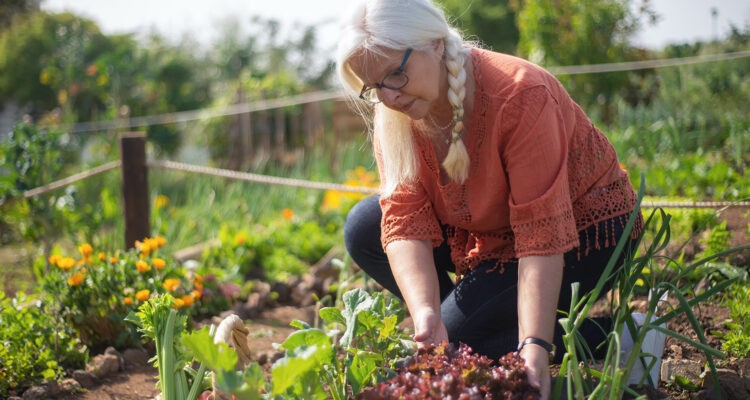With spring on the horizon, it is time to get your hands dirty, get out in the sun, and collaborate with nature as you create your own personal vegetable garden.
If you have always wanted to start your own vegetable garden but weren’t quite sure where to begin, this beginner’s guide of sorts can help you start your own fun-filled adventure in creating a tasty garden at home. In order to build your own vegetable garden, there are many variables to consider, such as size, location, types of vegetables to plant, soil, and so much more. We spoke with Dennis Patton, Kansas State University Research and Extension Horticulture Agent in Johnson County, in order to advance our understanding of how to start a vegetable garden from scratch. With the basic knowledge in hand, and a bit of commitment and patience, as well as an attitude of fun, you will be well on your way to enjoying a personal farm to table experience, originating in your own backyard.
KCH&S: What are the benefits of growing your own vegetables?
PATTON: The beauty of growing your own vegetables is that you know what is in them, you can pick them fresh, they have not sat around in delivery trucks waiting to get to the store, and you don’t have to worry about them being picked before their natural sugar flavors have developed.
KCH&S: When is the best time to plant a garden?
PATTON: In this part of the country, we have three seasons: cool (spring), warm (summer), and the fall period. The cool season crops include lettuce, spinach, onions, beets, carrots, and radishes. The warm season veggies include tomatoes and peppers.
KCH&S: What are the most popular vegetables to grow?
PATTON: The number one crop is tomatoes, followed by peppers, hot or sweet. Radishes are also easy to grow, so those are popular. From planting to harvest, those take about 30 days. You can also get artistic and have dwarf cucumbers, for example, planted in a 5–10-gallon container, and have them climb up a trellis. This also saves space. The key is to find what works best for you, your space, and the available time you have.
KCH&S: What are some of the challenges of planting a vegetable garden?
PATTON: The biggest challenge is timing. Some people may start planting too late in the cool season or too early in the warm season. The reason some vegetable gardens fail is strictly because they were planted at the wrong time.
KCH&S: Is it better to plant with seeds or to use a transplant?
PATTON: This depends on the crop you are growing. Most vegetables are seeded. However, for the few that are transplanted, it does give them a jump on growth. These transplanted varieties typically include broccoli, cauliflower, cabbage, tomatoes, and peppers.
KCH&S: What is the best approach for starting a vegetable garden – inground, raised beds, or containers?
PATTON: It all depends on your space and your style. Most vegetable gardens need four to six hours of sunshine a day in order to flower and produce some fruit. I do suggest, though, that you start small, as it is easy to scale up. If you start too big, it can be overwhelming and seem like more work than fun. I am also a big proponent of growing what you want to grow and eat.
KCH&S: Where can we learn more about vegetable gardening?
PATTON: You can go to your favorite search engine and type in The Kansas Garden Guide. This is like the Bible for vegetable gardens in the Midwest. You can also call the garden hotline at 913-715-7050 during normal business hours throughout the year, or you can email questions to garden.help@jocogov.org.








